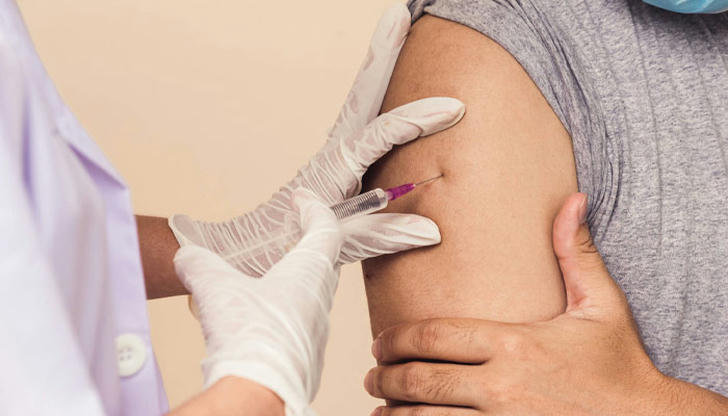Stay Away from Myths about Rabies Prevention

It is believed that many people have heard of rabies. Rabies is an animal-borne infectious disease caused by rabies virus infection. Most clinical manifestations include a specific fear of wind, hydrophobia, pharyngeal muscle spasms, progressive paralysis, etc.
Rabies is preventable but not treatable, and once it develops, the mortality rate is close to 100%. According to incomplete statistics, more than 55,000 people around the world die from rabies every year. That is, one person loses his or her life due to rabies every 10 minutes or so. Infected and virus-carrying animals are the main source of infection for rabies, and the saliva of these animals contains large amounts of virus. However, many people still have some myths about rabies.
Myth 1: You won’t get rabies from a dog scratch

The following situations are all considered to be rabies exposure and correct preventive measures should be taken as soon as possible:
Being bitten or scratched by a rabid dog, a suspected rabid dog, or a rabies host animal that cannot be determined to be healthy; Being licked at mucous membranes, broken skin, or open wounds;
Having mucous membrane contact with the saliva or tissues of animals that may be infected with rabies virus, etc.
Myth 2: Rabies vaccine can be given a few days later

After being scratched or bitten by an animal with a high risk of rabies, the prevention of rabies is to “fight against death”. The incubation period of rabies is usually 1 to 3 months, and rarely less than 1 week or more than 1 year. However, the length of the incubation period before each person becomes ill is uncertain, so treatment after rabies exposure should be done as early as possible.
It should be noted that post-exposure treatment for rabies is not simply vaccination. Treatment after rabies exposure includes timely wound treatment, rational use of passive rabies immune preparations, and rabies vaccination.
Myth 3: Rabies virus can only be carried by dogs

The risk of rabies from animals is divided into three categories: Rabies high-risk animals: dogs, cats, badgers, raccoon dogs, wolves, foxes and other wild carnivorous mammals, and bats. After being injured by these animals, you must go to the hospital for treatment as soon as possible.
Rabies low-risk animals: cattle, sheep, pigs, and other domestic animals. There is a theoretical risk of rabies transmission from such animals, but the risk of transmission is extremely low. After being injured by these animals, routine post-exposure treatment for rabies is generally not required.
Rabies no-risk animals: Animals other than mammals, such as birds, fish, reptiles, etc. None of these animals are contagious to rabies.
Myth 4: Dogs that look normal don’t transmit rabies

Dogs with rabies tend to be aggressive. If you find that a dog behaves abnormally and bites people for no reason, you should avoid it in time. It should be noted that in the early stages of dogs suffering from rabies, there are no obvious abnormalities, and it is difficult for non-professionals to accurately judge whether they are sick. Therefore, “normal-looking” dogs still run the risk of spreading rabies after injuring people. After being bitten by a dog, we should conduct post-exposure treatment for rabies as soon as possible.
Myth 5: Pet dogs don’t carry the rabies virus

Even seemingly healthy dogs can carry rabies. In addition, stray dogs and wild dogs carrying the rabies virus have a relatively large range of activities, and there is a high chance of transmitting the virus to healthy animals. Therefore, domestic dogs and cats must be vaccinated against diseases. If you are bitten or scratched by a domestic dog, you must clean the wound promptly and get a rabies vaccine promptly to prevent the problem before it happens.
Myth 6: The vaccine is necessary only after the injury is bleeding

If you are bitten or exposed to an animal during contact with animals, different preventive measures should be taken according to different levels of exposure. There are three levels of skin exposure:
• Level 1 exposure refers to intact skin contact or licking, and only the exposed area needs to be washed;
• Level 2 exposures include bites on exposed skin or minor scratches without bleeding. In this case, the wound should be treated immediately and rabies vaccination should be carried out promptly;
• Level 3 exposure includes licking broken skin, contamination of mucous membranes with animal saliva, and multiple bites or scratches penetrating the skin.
If Level 3 exposure occurs, in addition to handling Level 2 exposure, passive rabies immune preparations should also be used by relevant regulations.
Myth 7: One rabies vaccination provides lifelong immunity

Usually, antibody levels in the body can be maintained for at least 1 year after a full course of rabies vaccination. However, there is still controversy about the rabies vaccination procedure after re-exposure. According to relevant documents from the World Health Organization: Immunized individuals of any age who have records proving that they have received pre-exposure prophylaxis or at least 2 doses of post-exposure prophylaxis do not need to be injected with immune globulin. If the re-exposure occurs within 3 months after full immunity from the previous exposure, there is generally no need to be vaccinated again; if the re-exposure occurs 3 months later, one dose of vaccine must be injected on the day of the bite and the third day.
